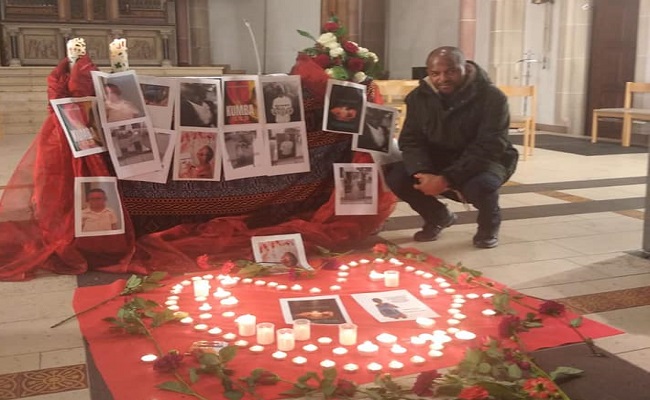Privacy Overview
This website uses cookies so that we can provide you with the best user experience possible. Cookie information is stored in your browser and performs functions such as recognising you when you return to our website and helping our team to understand which sections of the website you find most interesting and useful.


















26, October 2022
Kidnapping for ransom on the rise in French Cameroun 0
Since 2013, communities in Cameroon’s Far North Region have suffered attacks from the violent extremist group Boko Haram. The divisions of Mayo-Tsanaga, Mayo-Sava and Logone-et-Chari have been hardest hit. The terror group has also been responsible for several kidnappings, most recently in the Lake Chad communities of Tchika (in August) and Kofia (in September).
But other groups besides Boko Haram are increasingly kidnapping people, according to research by the Institute for Security Studies (ISS) and Association Sembe in the North and Far North regions. Perpetrators include former shepherds and criminal gangs comprising Cameroonians, Nigerians, Nigeriens and Chadians. The kidnappers live in the bushes and mountains along the Cameroon-Nigeria border and team up with local accomplices who act as informants.
The phenomenon has continued for over a decade, with trends worsening in the past four years. One interviewee said: ‘About 60 cases have been recorded, and a lot more go unreported as most families prefer not to raise the alarm when their loved ones are in captivity.’
People are generally reluctant to involve the authorities in finding their relatives. In most cases, they fear their family members will be killed if the government or security forces become involved, so they negotiate privately with the kidnappers. Families also doubt the security forces’ ability or commitment to free their loved ones safely. Vigilantes are sometimes called on to help but lack the appropriate weapons to confront the criminals.
Kidnappings are more frequent in the dry season when communities are accessible. The attacks often occur late at night. Armed groups of about four to 10 attackers storm houses, sometimes firing shots in the air to dissuade residents from resisting. Many victims are taken across the border into Nigeria, Chad and the Central African Republic or kept in Cameroonian hideouts.
The research shows that subdivisions like Bourrha, Hina, Mogode and Mokolo are the most affected in the Far North. In Cameroon’s North Region, the Touboro subdivision is the hardest hit, with over a dozen cases reported from January to October 2022.
The most targeted villages are situated in rural areas with little or no state presence, including police, gendarmerie or military. It takes time for information to reach the security forces when incidents occur.
The ransom amount demanded depends on the status of the victim or their family and ranges from 1 million CFA francs to tens of millions of CFA francs. Male family heads are often the prime targets, but women and children are also taken.
Negotiations take days, sometimes weeks, with gangs upping the pressure and threats to obtain the ransom. They use well-planned tactics to cover their tracks, including regular changes of hideouts in or outside Cameroon. Victims are usually released unharmed once the criminals’ demands are met, but some are injured if their families delay paying the ransom.
In places where Boko Haram’s terror attacks are rife, kidnapping by criminal gangs is almost non-existent. These include Moskota, Tourou, Kolofata, Amchide and Fotokol, among others. However Boko Haram seeks to expand into new areas, as is happening in Nigeria, so communities cannot afford to be complacent.
Efforts have been made to address the problem. On 3 August, the gendarmerie uncovered a gang of male and female kidnappers in Ngong in Cameroon’s North Region after the abduction of a four-year-old girl. In June, gendarmes arrested 10 people responsible for several incidents in Badjengo. In the same month, the Rapid Intervention Battalion secured the release of eight hostages in Touboro. The security forces’ success and restoration of order were credited to their close collaboration with local authorities.
While Boko Haram takes hostages not just for ransom but to use as recruits, suicide bombers, labourers and brides for fighters, economic gain remains the primary motivation for the ongoing kidnappings.
Before Boko Haram, highway robbers terrorised border communities in the North and Far North regions. But the terrorist insurgency has made the areas more volatile. Criminal groups now have access to more sophisticated arms, and some have adopted Boko Haram’s modus operandi. Security forces are more likely to be deployed where Boko Haram attacks are high, leaving other border villages with little or no protection. This makes them fertile ground for criminal gangs.
The increase in kidnapping networks could see Cameroon’s security situation degenerate further. The more money these groups make, the more powerful they become, with the potential for staging further high-profile attacks. The lucrative nature of kidnapping could attract recruits to the gangs and enable them to equip themselves better.
ISS research shows how Boko Haram and bandits team up in Nigeria to carry out criminal activities, including kidnapping. The proximity and coordination between these groups in Cameroon mean the same could happen there.
Kidnappings are causing untold hardship in border communities already suffering from poverty and the effects of climate change. Insecurity has also fractured community life, as villagers have become more suspicious of one another.
More police, gendarmes and military posts are needed across border communities. At the same time, civilians and law enforcement must collaborate to share information and build mutual trust. Authorities need to tap into existing community-centred approaches to enhance vigilance and tracking capabilities. And those accused of abductions must be arrested and prosecuted.
Building the socio-economic resilience of communities is also essential to help them resist the lures of bandit groups.
Culled from ISS Africa